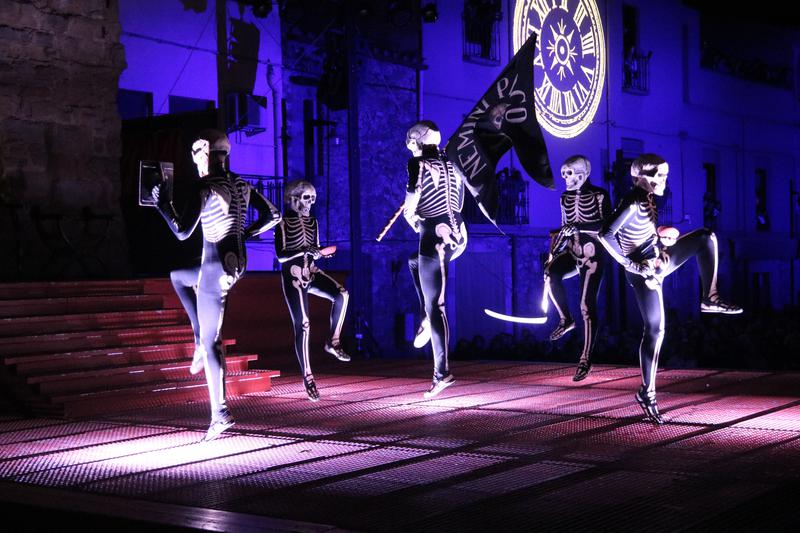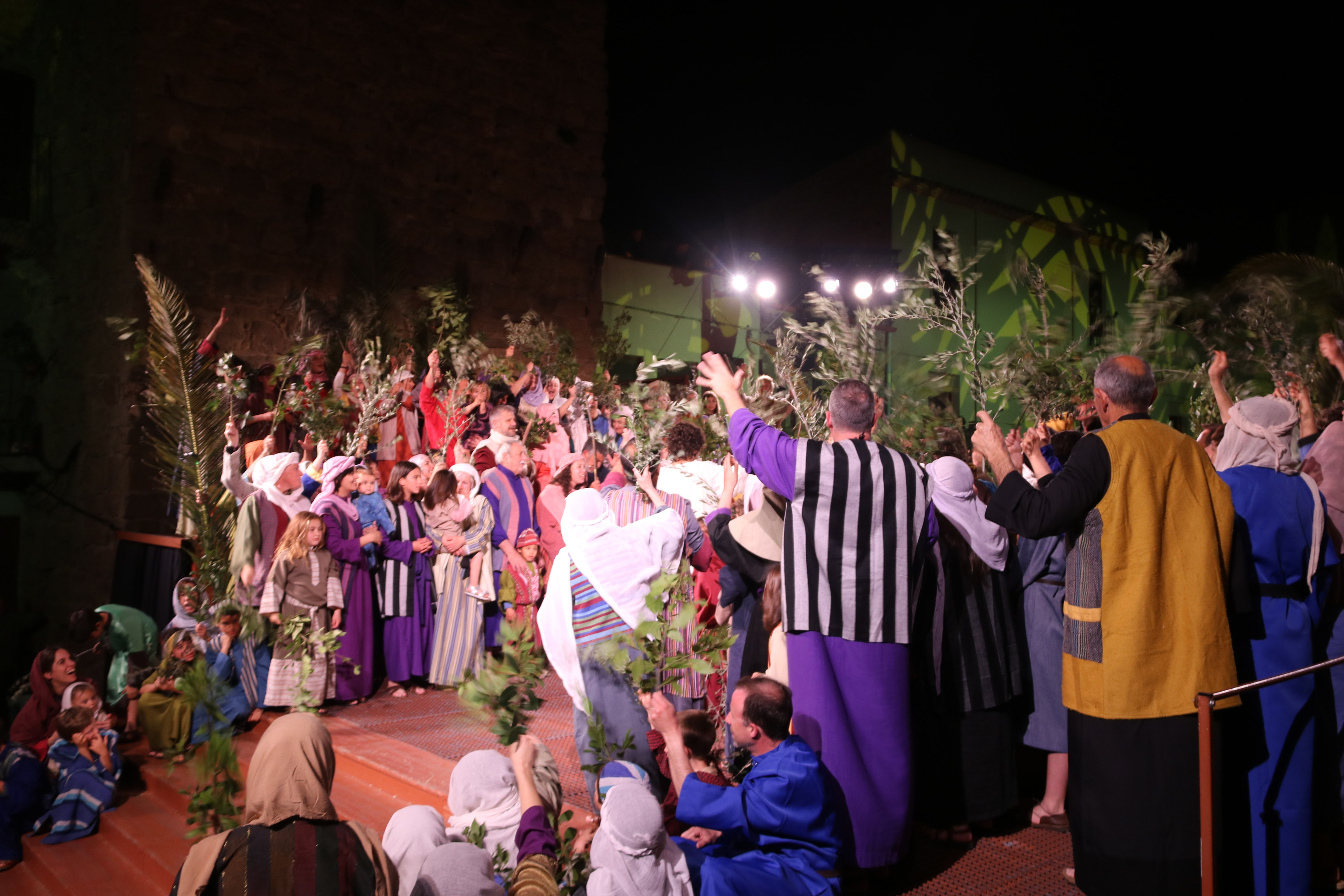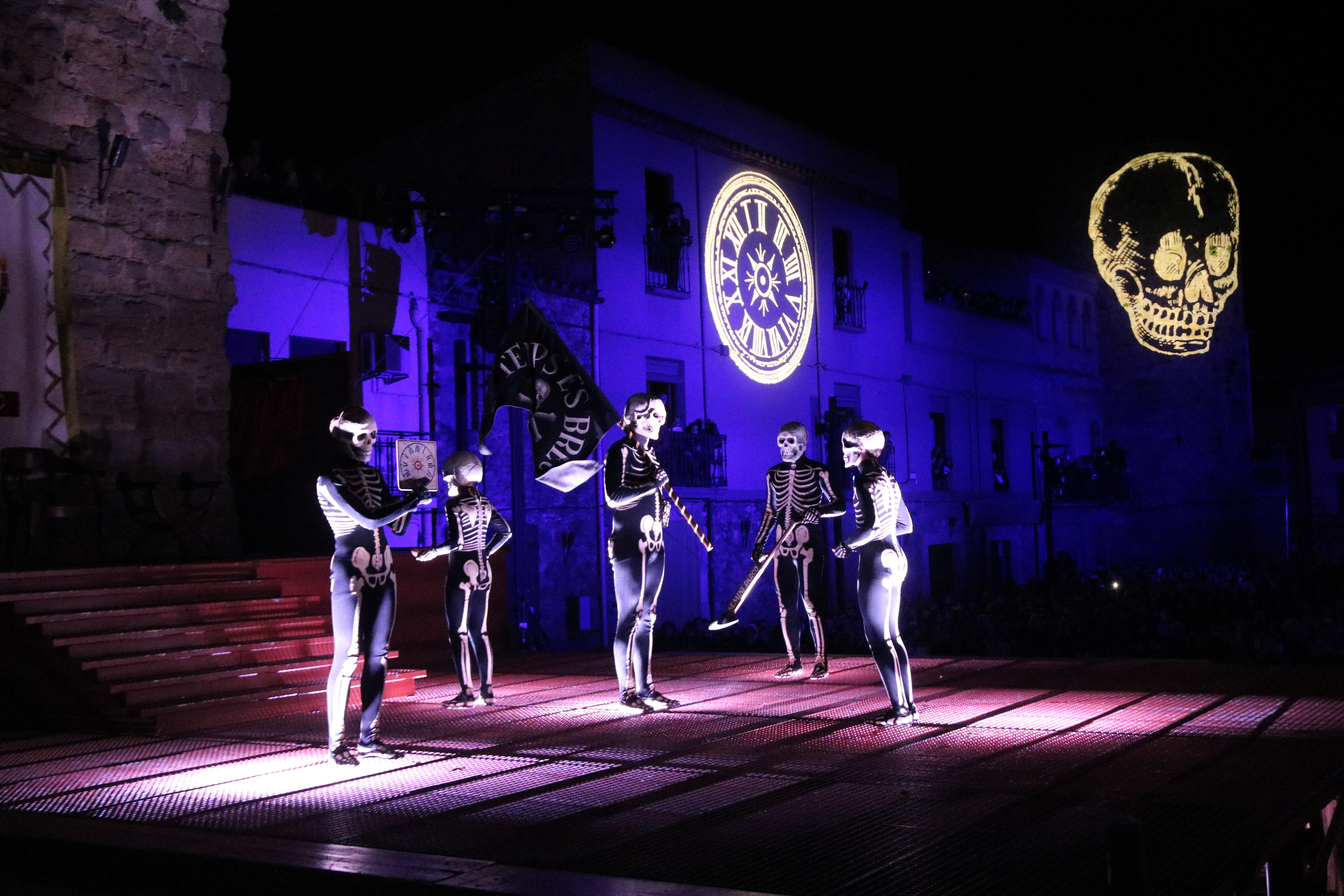The Dance of Death: Catalonia's popular Holy Week procession seeking Unesco recognition
8,000 people flock to Verges to see one of the oldest liturgical events

Like every year, the streets of Verges were brought to life by the haunting spectacle of the Dance of Death, which attracted nearly 8,000 visitors to this picturesque town in the Baix Empordà region of Girona.
The ancient tradition, one of the oldest liturgical processions in Catalonia, takes places on Maundy Thursday and marks the beginning of Holy Week in this village of just over 1,100 inhabitants.
From early Thursday afternoon, thousands of people followed the procession of the 'Manages de Verges.' The sound of trumpets and drums marked the passage of the Roman army, which crossed the main streets of Verges in the first event of the procession.

As night fell, the main square came alive with the poignant Passion Play, where 1,400 attendees participated in the moving reenactment of the life and sacrifice of Christ.
With tickets sold out days in advance, the streets around Verges buzzed with anticipation as spectators waited for the main procession to begin: the mesmerizing Dance of Death, featuring five skeletal figures swaying to the somber beat of a drum.

This year, the Verges procession organizers want to secure UNESCO recognition for the procession as Intangible Cultural Heritage of Humanity.
Agustí Cansell, one of the organizers of the Verges procession, expressed the deep pride of the residents in the annual Holy Week tradition and noted the dedication required to preserve this ancient custom.
"We have the virtue that it has been preserved over time. We are proud of it," Cansell says.
Although UNESCO recognition is very difficult to achieve, he remains optimistic that Verges deserves such an honor.